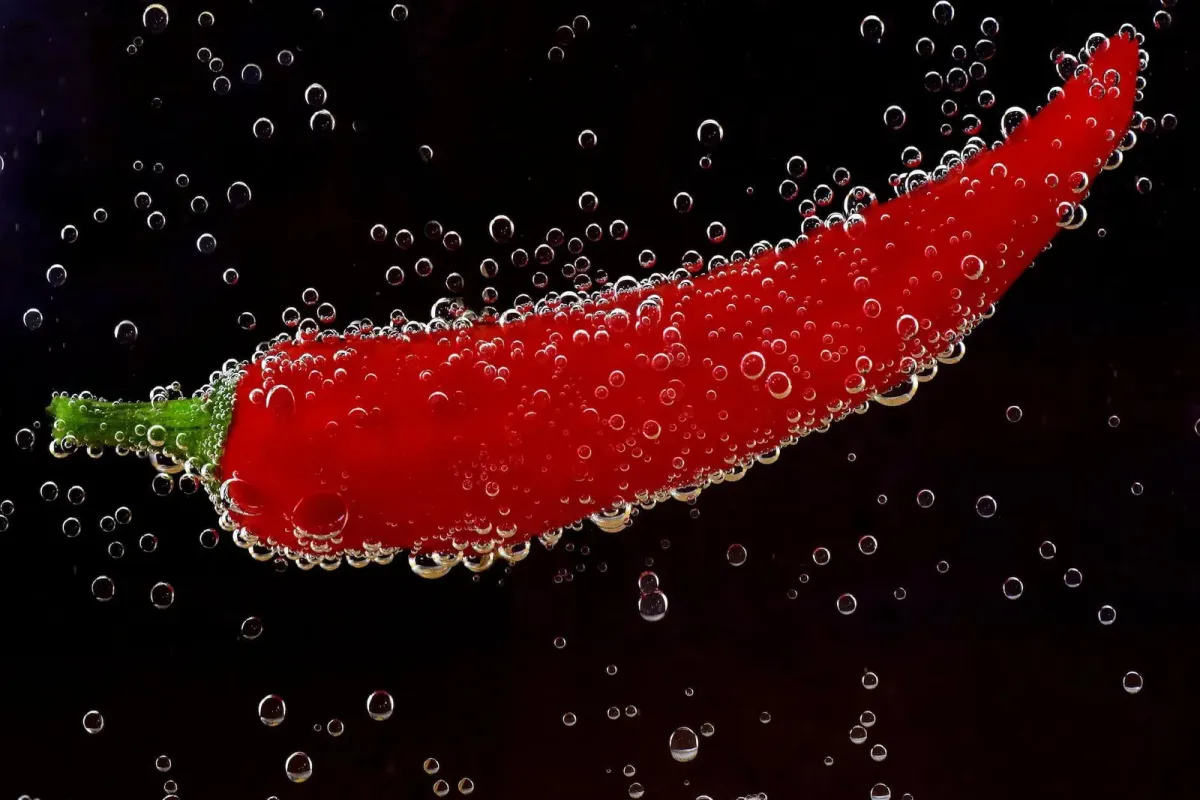Tex-Mex Ingredients, Diverse Dishes, and Health Benefits
We cover the common Tex-Mex ingredients that form the backbone of Tex-Mex dishes, revealing their diverse culinary uses and the surprising health benefits.

I. Introduction
Tex-Mex cuisine, a delightful fusion of Texan and Mexican culinary traditions, has captivated food enthusiasts worldwide. This cuisine's essence lies in its blend of flavors, deeply rooted in historical and cultural exchanges. In this exploration, we cover the common Tex-Mex ingredients that form the backbone of Tex-Mex dishes, revealing their diverse culinary uses and the surprising health benefits they offer.
II. Core Tex-Mex Ingredients and Their Uses in Dishes
A. Cumin
Cumin, with its earthy and warm notes, is pivotal in dishes like chili con carne and taco seasoning. Beyond its culinary appeal, cumin is celebrated for its digestive benefits and being a rich source of iron.
B. Chili Powder
A blend of ground chilies and spices, chili powder is the heart of dishes such as enchiladas and fajitas. Its capsaicin content is known to boost metabolism, making it a beneficial addition for health-conscious eaters.
C. Garlic
Integral to salsas and guacamole, garlic's pungent flavor is a Tex-Mex staple. Its health advantages are manifold, offering antibacterial properties and supporting heart health.
D. Onion
From quesadillas to burritos, onions add sweetness and texture. They are also a powerhouse of antioxidants and bolster immune function.
E. Paprika
Used in Tex-Mex casseroles and seasoning blends, paprika not only adds color but also provides vitamin A and has anti-inflammatory properties.
F. Cheese
In the realm of Tex-Mex cuisine, cheese plays a pivotal role, adding richness and depth to many dishes. Varieties like cheddar, Monterey Jack, and the blend known as "Mexican cheese" are particularly favored.
- Usage in Dishes: Cheese is a versatile ingredient in Tex-Mex cuisine. It's the gooey delight in quesadillas, the comforting layer in enchiladas, and the irresistible topping on nachos. It also plays a significant role in stuffed peppers, tacos, and as a garnish for chili. Each type of cheese brings a different texture and flavor profile, making it an essential component in both the taste and presentation of Tex-Mex dishes.
- Health Benefits: While often enjoyed for its flavor, cheese also provides several nutritional benefits. It is a great source of calcium, which is crucial for bone health. Cheese is also rich in protein, aiding in muscle repair and growth. Additionally, it contains essential fatty acids, vitamins like B12, and minerals such as zinc, phosphorus, and riboflavin. The probiotics found in some cheeses can aid in gut health. However, it's worth noting that cheese should be consumed in moderation due to its high fat and sodium content.
In Tex-Mex cuisine, cheese is not just a flavorful indulgence but also a contributor to nutritional intake, offering benefits that complement its rich and comforting presence in many dishes.
G. Beans
Beans are a cornerstone of Tex-Mex cuisine, providing a hearty and nutritious element to many dishes. Pinto and black beans are especially popular, appreciated for their versatility and rich, earthy flavors.
- Use in Tex-Mex Dishes: Beans find their way into an array of Tex-Mex creations. They are the heart and soul of refried beans, a staple side dish, and a key ingredient in burritos and taco fillings. Beans also feature prominently in Tex-Mex salads, soups like chili, and as a base for dips. Whether whole, mashed, or refried, beans add substance and texture to dishes.
- Health Benefits: Beans are a nutritional powerhouse. They are an excellent source of plant-based protein, making them a great option for vegetarians and meat-eaters alike. High in fiber, they aid in digestion and can help regulate blood sugar levels. Beans are also rich in essential nutrients like iron, potassium, and magnesium, and have been linked to reduced risk of chronic diseases such as heart disease and diabetes.
H. Rice
Rice in Tex-Mex cuisine is more than just a side dish; it's a versatile component that complements the bold flavors of the cuisine.
- Role in Tex-Mex Recipes: Often seasoned with a blend of spices, tomatoes, and vegetables, Tex-Mex rice is a flavorful accompaniment to main dishes like fajitas and enchiladas. It's also used as a filling in burritos and as a base in hearty rice bowls, absorbing and enhancing the flavors of the other ingredients.
- Health Benefits: When prepared properly, rice can be a healthy component of Tex-Mex cuisine. It's a good source of carbohydrates, providing energy to the body. Brown rice, in particular, offers whole grain benefits, such as fiber, which aids in digestion and can help in maintaining a healthy weight. Rice also contains essential minerals like manganese and selenium.
I. Tomatoes
Tomatoes are a fundamental ingredient in Tex-Mex cuisine, known for their juiciness and vibrant color, enhancing both the flavor and appearance of dishes.
- Usage in Tex-Mex Dishes: Fresh, canned, or as salsa or pico de gallo, tomatoes are versatile in Tex-Mex cooking. They are a key ingredient in salsas, both cooked and fresh, and are used in dishes like enchilada sauce, taco fillings, and as a topping for nachos. Their acidity and sweetness balance the flavors of spicy and savory elements in the cuisine.
- Health Benefits: Tomatoes are rich in vitamins C and K, potassium, and folate. They are renowned for their high antioxidant content, including lycopene, which has been linked to reduced risk of heart disease and cancer. The fiber in tomatoes aids in digestion and may contribute to maintaining a healthy gut.
Together, beans, rice, and tomatoes not only contribute essential flavors and textures to Tex-Mex cuisine but also bring a range of health benefits, making them invaluable components of this vibrant culinary tradition.
III. Additional Tex-Mex Ingredients, Dishes, and Health Benefits
III. Additional Tex-Mex Ingredients, Dishes, and Health Benefits
While the core ingredients form the foundation of Tex-Mex cooking, several other elements are crucial in defining this flavorful cuisine. In this section, we will explore additional flavorful ingredients used in Tex-Mex dishes, focusing on their culinary uses and the various health benefits they offer.
A. Bell Peppers
Bell peppers, with their vibrant colors ranging from green to red, yellow, and orange, are not only a feast for the eyes but also a staple in Tex-Mex cuisine. They add a sweet, slightly tangy flavor to a variety of dishes.
- Culinary Uses: Bell peppers are incredibly versatile in Tex-Mex cooking. They're a key component in fajitas, adding crunch and color. Stuffed peppers, a classic Tex-Mex dish, showcase them as the star ingredient. They're also commonly used in salsas, salads and as a topping for tacos and nachos, enhancing the overall flavor profile of these dishes with their mild sweetness.
- Health Benefits: Beyond their culinary appeal, bell peppers are a nutritional powerhouse. They are exceptionally rich in vitamin C, even more so than oranges, which support immune health and skin integrity. The high levels of antioxidants, including beta-carotene, in bell peppers, particularly in the red variety, are beneficial for eye health and may reduce the risk of several chronic diseases. Additionally, bell peppers are a good source of vitamin B6 and folate, which contribute to the proper functioning of the nervous system.
B. Lime
Lime, with its distinctively zesty and tart flavor, is an essential accent in many Tex-Mex dishes, bringing a bright and refreshing element to the cuisine.
- Role in Recipes: The juice and zest of lime are used to marinate meats, add a tangy touch to seafood dishes like ceviche and fish tacos, and balance the flavors in salsas and guacamole. Lime is also a key ingredient in beverages, including the classic margarita, adding a refreshing zest that perfectly complements Tex-Mex cuisine's flavors.
- Health Benefits: Limes are rich in vitamin C, essential for immune function and skin health. The vitamin C in limes aids in collagen synthesis, which is crucial for maintaining skin elasticity and wound healing. Lime also contains antioxidants that help neutralize free radicals, reducing oxidative stress and promoting overall health. The citric acid found in lime can boost metabolism, aiding digestion and weight management.
C. Corn
Corn, a native American grain, is integral to Tex-Mex cuisine, contributing its sweet, earthy flavor and versatility to numerous dishes.
- Usage in Tex-Mex Dishes: Corn is used in various forms in Tex-Mex cooking. It's the primary ingredient in corn tortillas, a staple for tacos and enchiladas. In its whole form, corn is the star of elote (Mexican street corn), where it is grilled and topped with condiments like mayo, cheese, and chili powder. It also adds sweetness and texture to salsas, salads, and casseroles.
- Health Benefits: Corn is a good source of dietary fiber, which is beneficial for digestive health. It's also rich in B vitamins, including thiamin and niacin, which are essential for energy production and maintaining healthy brain function. Corn contains essential minerals like zinc, magnesium, copper, iron, and manganese. Additionally, its antioxidant content, particularly lutein and zeaxanthin, contributes to eye health by protecting against age-related macular degeneration.
Each of these ingredients – bell peppers, lime, and corn – plays a significant role in defining the unique flavors of Tex-Mex cuisine. Their inclusion in various dishes not only enhances taste and presentation but also brings a variety of health benefits, contributing to the nutritional value of this beloved culinary tradition.
IV. Special Focus: The Nutritional Profile of Tex-Mex Cuisine
Prior to moving to Texas, I had what many would define as a very bland diet and a keen dislike for anything healthy like peppers, tomatoes, onions, etc. I had hated them as a kid, and still had a bad relationship with them as a young adult.
But moving to Texas changed that because Tex-Mex cuisine is literally a symphony of flavors that dances on the palate. And I mean it. An onion wasn't just a dirty bulb that you pulled out of the ground anymore, and tomato wasn't just this red vegetable and peppers - wow - the WORLD of peppers opened up to me, and I fell in love.
Knowing what I know now, this vibrant culinary tradition of Tex-Mex can actually be a hidden gem for all kinds of people, including those who wouldn't normally venture out of their comfort zones - even health-conscious people! So join me, and I’ll share some insider tips on crafting healthier yet equally tantalizing Tex-Mex meals.
1. The Balance of Nutrients in Tex-Mex Ingredients:
- Protein Powerhouses: Think of those hearty beans and succulent strips of chicken in your burrito. These are not just filling; they're packed with protein, essential for muscle repair and growth.
- Fiber Fiesta: Beans, whole grain rice, and corn – the trio that brings not just texture and flavor but also a fiber-rich experience, aiding in digestion and keeping you fuller for longer.
- Vitamin and Mineral Mélange: The colorful peppers, tomatoes, and avocados are more than just eye candy; they’re brimming with vitamins A, C, E and minerals like iron and potassium.
2. Making Healthier Tex-Mex Choices:
- Go Whole Grain: Swap out white rice for brown or quinoa. Choose whole-grain tortillas over refined ones to up your fiber intake.
- Lean on Lean Proteins: Opt for grilled chicken, fish, or lean cuts of beef. If you're vegetarian, beans and cheese are your best friends for protein.
- Veggie Volume: Boost the vegetable content. Add spinach to your enchiladas, bell peppers to your fajitas, or a fresh tomato salsa on the side.
- Control the Cheese: Cheese, while delicious, can add a lot of saturated fat. Use it sparingly or explore lower-fat options.
3. Spice It Right:
- Flavor Without the Fat: Tex-Mex spices like cumin, chili powder, and paprika can add immense flavor without the need for excess oil or fat.
- Herb Your Enthusiasm: Fresh cilantro, oregano, and other herbs not only elevate the taste but also add a nutritional punch.
4. Mindful Eating:
- Portion Proportion: Tex-Mex dishes can be generous. Being mindful of portion sizes can help maintain a balanced diet.
- Homemade Heaven: Cooking at home? You’re in control. Less oil, more veggies, and lean proteins make for a healthier meal.
So, there you have it – Tex-Mex can indeed be a part of a healthy, TASTY diet. It’s all about choosing the right ingredients and balancing the flavors with nutrition in mind. Who says you can't have your enchilada and eat it too?
V. Conclusion
Tex-Mex cuisine is a testament to the culinary diversity and the interplay of tradition and innovation. The ingredients used are not just carriers of flavor but also of significant health benefits. This exploration encourages food lovers to indulge in Tex-Mex dishes with a new perspective, appreciating the richness of flavors and the nutritional benefits they bring.
Remember, the essence of Tex-Mex is its versatility and adaptability, making it perfectly poised for delicious, nutritious spins. Happy, healthy eating! 🌮🥗🌶️
VI. References & Resources
Here's a list of scholarly articles, cookbooks, and nutritional guides that offer an in-depth exploration of Tex-Mex cuisine, its nutritional aspects, and culinary practices. These resources provide valuable insights into the ingredients, dishes, and health benefits associated with this vibrant culinary tradition:
- The Tex-Mex Cookbook: A History in Recipes and Photos by Robb Walsh. This book offers a comprehensive look at the evolution of Tex-Mex cuisine, featuring traditional recipes and their historical contexts.
- Truly Texas Mexican: A Native Culinary Heritage in Recipes by Adán Medrano. This cookbook delves into the traditional recipes that have influenced Tex-Mex cuisine, focusing on indigenous ingredients and preparation methods.
- Mexican Food is Healthy: A Dietitian Explains by Krista Linares, MPH, RD. Her article provides guidance on creating healthy, balanced Mexican meals by incorporating carbohydrates, fiber, protein, fat, and non-starchy vegetables, using traditional Mexican ingredients.
- Tex-Mex from Scratch by Jonas Cramby. A modern take on Tex-Mex recipes, this book focuses on authentic flavors and homemade ingredients, offering a fresh perspective on traditional dishes.




